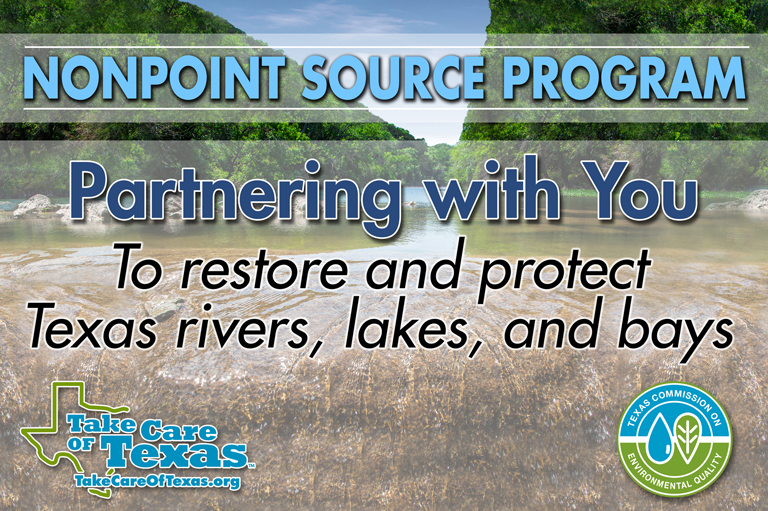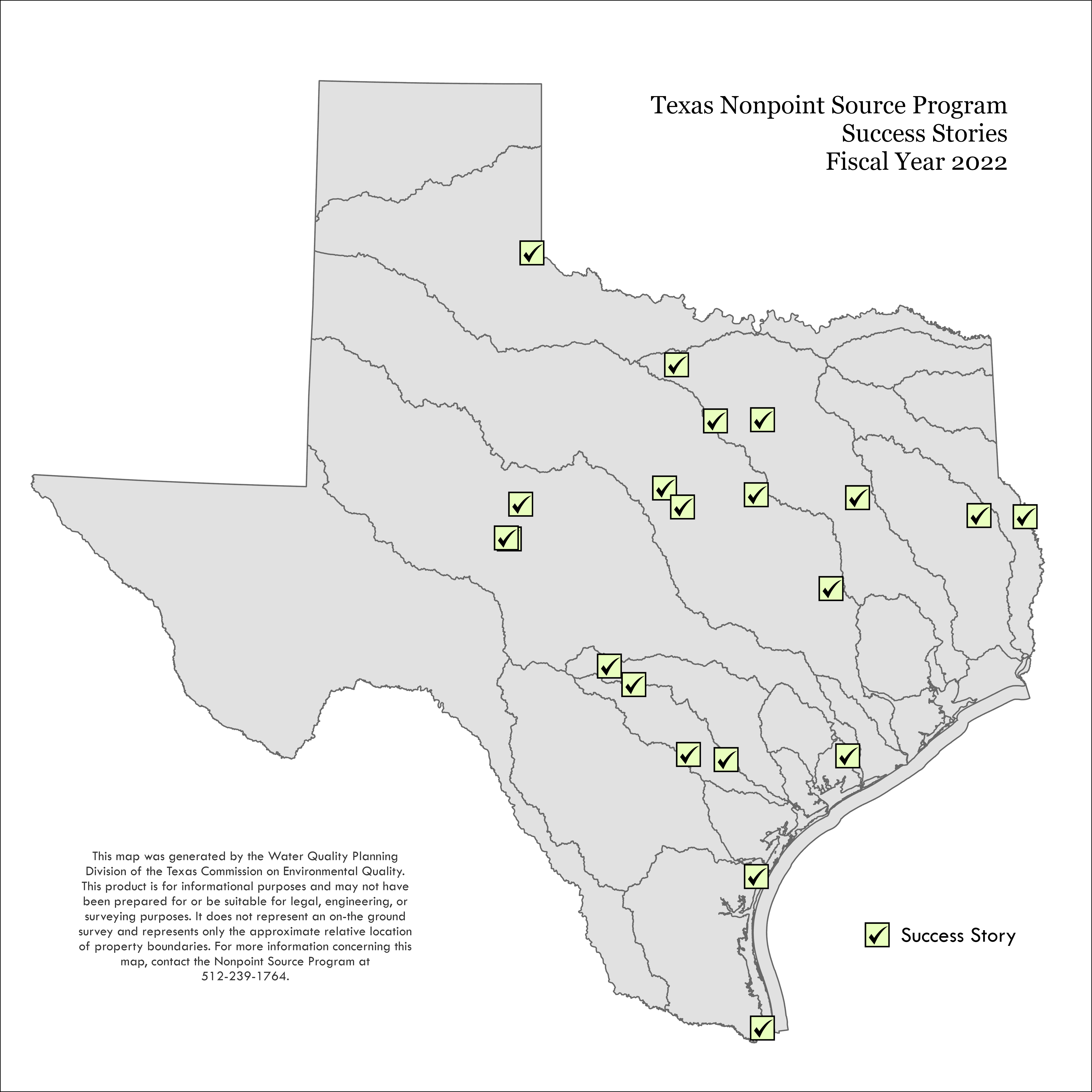Texas Nonpoint Source Management Program

On this page:
TCEQ and the Texas State Soil and Water Conservation Board (TSSWCB) jointly update the Nonpoint Source Management Program every five years.
Approved 2022 Texas Nonpoint Source Management Program
The 2022 Texas Nonpoint Source Management Program was adopted by the TCEQ Commissioners on December 15, 2021, submitted to the U.S. Environmental Protection Agency by the Texas Governor, and approved by EPA on August 29, 2022.
The 2022 Texas Nonpoint Source Management Program was developed jointly by TCEQ and TSSWCB and accomplishes the following:
- Incorporates the EPA's eight components of an effective program.
- Establishes long- and short-term goals for the program.
- Provides coordination of nonpoint source-related programs and activities conducted by federal, state, regional, and local entities.
- Prioritizes assessment, planning, and implementation activities in priority watersheds and aquifers.
You can order a printed copy of the 2022 Texas Nonpoint Source Management Program (SFR-068/22) at the TCEQ Publications Search page.
Program Achievements
EPA began officially recognizing contributions towards restoring impaired water bodies and publishing them as success stories in 2008. Since then, the TCEQ and TSSWCB Nonpoint Source programs have annually presented success stories that highlight work that led to successful restoration of over 25 water bodies across the state.
The most recent EPA-approved Success Story for TCEQ was the Tres Palacios Tidal (AU 1501_01). A list of other Success Stories for Texas can be found below and on EPA's website.
 Nonpoint Source Success Stories Map
Nonpoint Source Success Stories MapIndividual Success Stories:
- Aquilla Reservoir
- Attoyac Bayou
- Brownsville Ship Channel
- Buck Creek
- Catfish Creek
- Colorado River Below E.V. Spence Reservoir
- Concho River
- Fosdic Lake
- Guadalupe River Above Canyon Lake
- Lake Como
- Leon and South Leon rivers
- Lower San Antonio River
- Navasota River
- North Fork Rocky Creek
- Oso Bay
- Sulfur Creek
- Toledo Bend Reservoir
- Tres Palacios Creek
- Tres Palacios Tidal
- Upper Cibolo Creek
- Leon and South Leon River
- Upper Leon River and Pecan Creek
- Upper San Antonio River (AU 1911_02)
- Upper San Antonio River (AU 1911_07)
- West Fork Trinity River
For More Information
To find out more about the NPS Program, call 512-239-6682 or e-mail us at nps@tceq.texas.gov.

 Back to top
Back to top